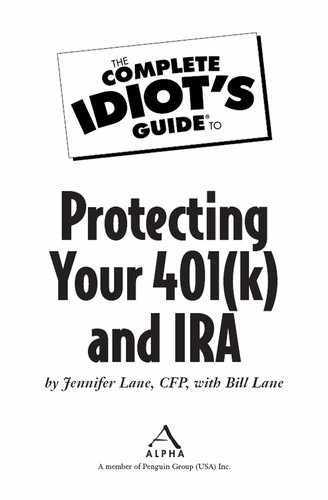Your 401(k) Investment Choices
Employers are required to pick a list of investment offerings for the 401(k) plan as part of choosing the company they hire to administer your plan. These plan providers are often familiar, big-name investment brokers like Fidelity Investments and Vanguard Group. Insurance companies like Principal Financial Group Inc. and Prudential Financial Inc. provide 401(k) plans, as well. The plan provider acts as the plan trustee and handles all the complicated back-office operations required of a 401(k) plan.
Plan providers send you regular account statements and provide access to your account online. They coordinate with the plan administrator who’s responsible for managing the tax and legal aspects of the plan. If you have questions about your plan that you can’t answer yourself by reading the Summary Plan Document, your employer might refer you to the plan administrator for an answer.
Don’t let fluctuations in your account balance discourage you from continuing to make contributions from each paycheck. Investing the same amount on a regular schedule as the market goes up and down in value is known as dollar cost averaging. This can help reduce the investment risk in your account over time.
Investing the same dollar amount at fixed intervals, such as each payday, is called dollar cost averaging. Because share prices increase and decrease daily, a regular investment buys fewer shares when prices are up and more shares when prices are down. Over time, this strategy can boost your investment performance.
The money in your 401(k) is invested according to the choices you make from among the menu of investment options. If you don’t choose one, the plan will invest your money in the default fund. Until recently, most plans had the stable value or money market fund as the default. Employers chose this account to protect the account from losing value, but for many employees this account was too conservative to be a good choice as a retirement investment. After recent ERISA rule changes, employers now use a target-date fund as the default fund. In the end, this fund may be the best choice for you, but research the choices and check for yourself.
Target-date funds are mutual funds whose allocations of stocks, bonds, and cash change as the portfolio moves closer to a time-specific event, such as retirement.
Simplified Investing
The plan provider and your employer want to make it easy for you to understand the investments in your plan. The plan’s website will contain a questionnaire to help you decide how much risk you are comfortable taking with your investments. There will also be a list of the investment choices. Most plans use Internet links in their online investment lists that link to information about each fund. If you don’t already know your optimal mix of investments—your asset allocation—start a new plan by completing the risk questionnaire your plan offers and check the recommended investment mix. Then check the list of choices for the strongest funds in each asset allocation category.
Don’t just pick the funds that have performed the best recently. Ideally, the funds you pick should have these characteristics:
• Be rated a 4- or 5-star fund by Morningstar (www.Morningstar. com).
• Have performed at least as well as their benchmark over the past one, three, and five years.
• Have an annual expense ratio of 1.5 percent or lower.
A benchmark is a standard used to compare performance, such as benchmarking a fund that invests in large company stocks against the Standard and Poor’s 500 Index. The annual expense ratio is the percentage of the plan’s assets that are paid to cover operating, management, and marketing costs.
Chapter 7 explains how to pick investments and decide on an asset allocation, but for now, if your plan offers a target-date fund, consider starting your contributions by investing in the target-date fund that matches your expected retirement year.
Fees
Your 401(k) plan has two sets of fees: administrative and investment. Both are paid by the plan—you won’t get a bill—but because fees are paid from plan funds, they affect the performance of your account. Administrative fees cover the cost of running the plan itself. This includes expenses such as the cost of preparing annual reports, running required discrimination tests, and supporting the website and customer service department you use to interact with your plan.
Investment fees exist within the investing account in the plan. You won’t see the administrative costs of the plan, but you can check on the investment costs. Some larger companies, which have 401(k) plans with high balances and a lot of employee participants, negotiate with the 401(k) provider to reduce the investment fees in the plan. You can check the regular fees on your 401(k) funds using the fund prospectus, www.Morningstar.com, or the fund’s website. Then check with your employer to see if your plan has waived the regular sales fees.

Nest Eggs
Most plans let you change your investment choices anytime, but some plans limit changes to a couple times a year. Rebalancing once a year—automatically if your plan offers this service—is the best way to keep your plan on track (see Chapter 7).

Rainy Days
Many 401(k) plans offer primarily mutual funds as their investment choices. Mutual funds have lower fees than the other common 401(k) investment—annuities. If your 401 (k) uses annuities with expense ratios higher than 1.5 percent, you need to decide whether investing in a less expensive IRA is a better alternative for you.
..................Content has been hidden....................
You can't read the all page of ebook, please click here login for view all page.
